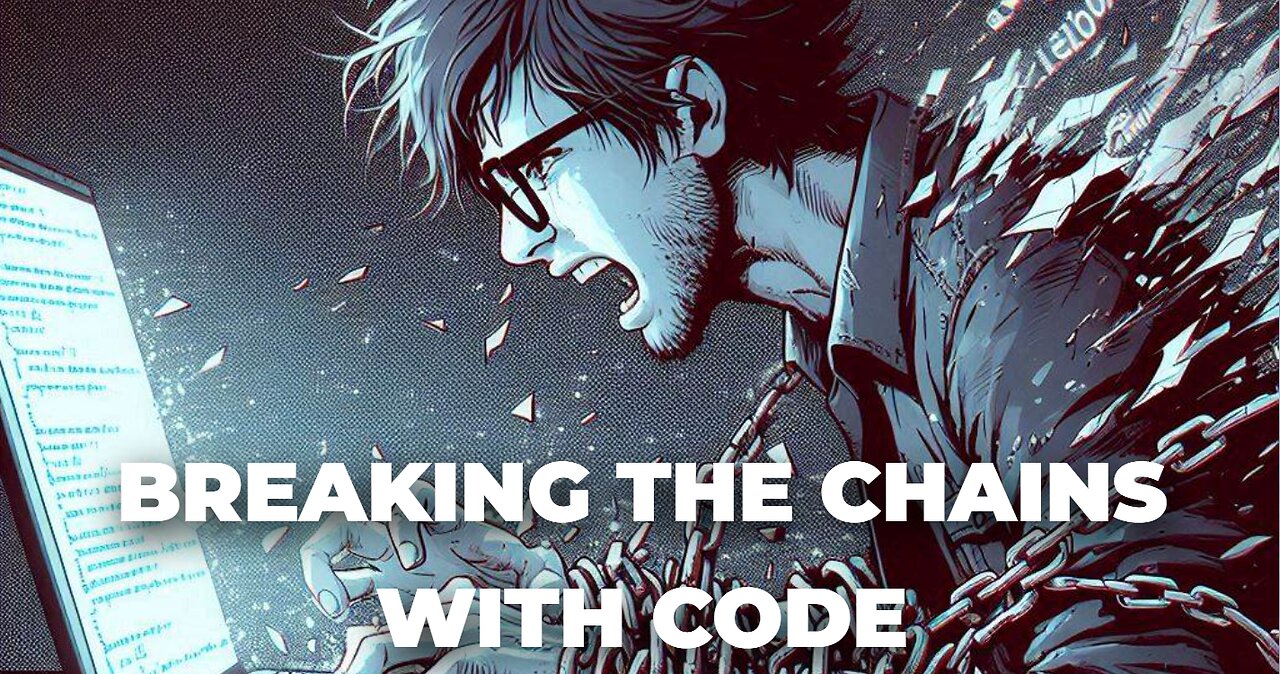Premium Only Content

Breaking the Chains with Code
"Breaking the Chains with Code" is an inspiring anthem about the power of technology in the fight against human trafficking. This song celebrates the rise of OSINT, blockchain, AI, and digital tools that expose the hidden world of trafficking, empowering us to break the chains of modern slavery. Through innovation and collaboration, we're using data and code to protect the vulnerable and bring freedom to those trapped in darkness.
🎶 Join the fight to end trafficking through technology! Like, subscribe, and share!
🔗 Spread the message and help bring awareness to how tech is breaking the chains of human trafficking.
💬 Comment below your thoughts on how technology is transforming the fight for justice.
💸 Support us via PayPal (link in description) to continue using music to inspire change and raise awareness.
Follow us for updates on new releases and to learn more about using technology for social good!
Hashtags:
#BreakingTheChainsWithCode #TechForJustice #EndHumanTrafficking #OSINTForFreedom #BlockchainForGood #AIForJustice #EmpowermentThroughTech #StopTrafficking #FightForFreedom #JusticeThroughTech #DigitalFreedom #CodeForChange If someone is enslaved or trafficked, it’s crucial to seek help in a safe and discreet manner. Here’s what to do in the United States or any other country:
1. Seek Immediate Help if Possible
Call Emergency Services: If you are in immediate danger, call your local emergency number (911 in the U.S.).
National Human Trafficking Hotline (U.S.): Call 1-888-373-7888 or text "HELP" to 233733 (BEFREE). This service is available 24/7, confidential, and connects you with trained professionals who can help you find safety and resources.
2. Use Safe Locations for Communication
Reach out from a safe place where you are not monitored, such as a trusted business, a hospital, or a police station.
If you can access a phone, consider using a public phone or someone else’s phone to avoid being tracked.
3. Contact a Trusted Authority or NGO
United States: The U.S. Department of Health and Human Services and U.S. Department of Homeland Security can provide support. Reach out through their trafficking hotlines or local offices.
Internationally: Contact the nearest embassy or consulate of your country for assistance if you are trafficked outside your home country. They can help you connect with local resources and authorities.
4. Document Information Safely
If you have access to write things down safely, try to document:
Your location (any landmarks, addresses, or businesses nearby)
Names of people involved in trafficking or enslaving you
Details about your situation, which may help authorities locate you or assist in rescuing others later.
5. Use Trusted Websites for Guidance
In the U.S., visit the National Human Trafficking Hotline (https://humantraffickinghotline.org) for resources and advice.
Globally, organizations like UNODC (United Nations Office on Drugs and Crime) provide resources for victims and can connect you with local NGOs and services.
Use government sites like U.S. Department of State’s trafficking page (https://www.state.gov/humantrafficking) for additional resources and contact points.
6. Find a Local NGO or Shelter
Contact local shelters or NGOs that specialize in helping trafficking victims. Many have partnerships with the government and offer confidential assistance.
Examples include Polaris Project in the U.S. and international organizations like Hope for Justice or A21.
7. Protect Yourself While Planning to Leave
Try to blend in and avoid raising suspicion if you cannot escape immediately.
Connect with local authorities or organizations when you have a safe opportunity, and follow their guidance for leaving your situation safely.
These steps are designed to help trafficked individuals connect with government resources and professional help.
-
 59:44
59:44
PMG
1 day ago $1.28 earned"BETRAYAL - Johnson's New Spending Bill EXPANDS COVID Plandemic Powers"
30.7K2 -
 6:48:50
6:48:50
Akademiks
14 hours agoKendrick Lamar and SZA disses Drake and BIG AK? HOLD UP! Diddy, Durk, JayZ update. Travis Hunter RUN
156K27 -
 11:45:14
11:45:14
Right Side Broadcasting Network
9 days agoLIVE REPLAY: TPUSA's America Fest Conference: Day Three - 12/21/24
340K28 -
 12:19
12:19
Tundra Tactical
14 hours ago $12.74 earnedDaniel Penny Beats Charges in NYC Subway Killing
62.8K12 -
 29:53
29:53
MYLUNCHBREAK CHANNEL PAGE
1 day agoUnder The Necropolis - Pt 1
153K52 -
 2:00:10
2:00:10
Bare Knuckle Fighting Championship
3 days agoCountdown to BKFC on DAZN HOLLYWOOD & FREE LIVE FIGHTS!
55.7K3 -
 2:53:01
2:53:01
Jewels Jones Live ®
1 day agoA MAGA-NIFICENT YEAR | A Political Rendezvous - Ep. 103
148K36 -
 29:54
29:54
Michael Franzese
18 hours agoCan Trump accomplish everything he promised? Piers Morgan Article Breakdown
134K57 -
 2:08:19
2:08:19
Tactical Advisor
22 hours agoThe Vault Room Podcast 006 | Farwell 2024 New Plans for 2025
198K11 -
 34:12
34:12
inspirePlay
1 day ago $6.00 earned🏆 The Grid Championship 2024 – Cass Meyer vs. Kelly Rudney | Epic Battle for Long Drive Glory!
95.7K8